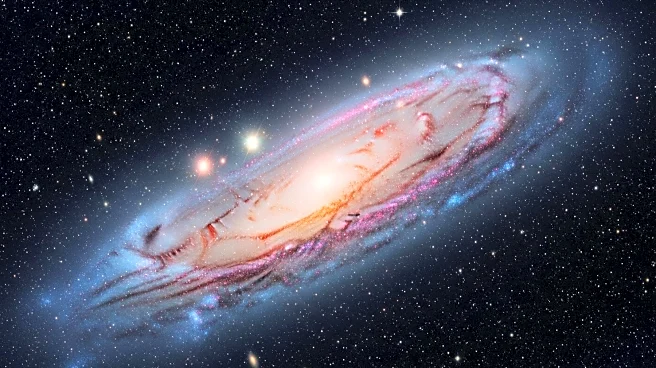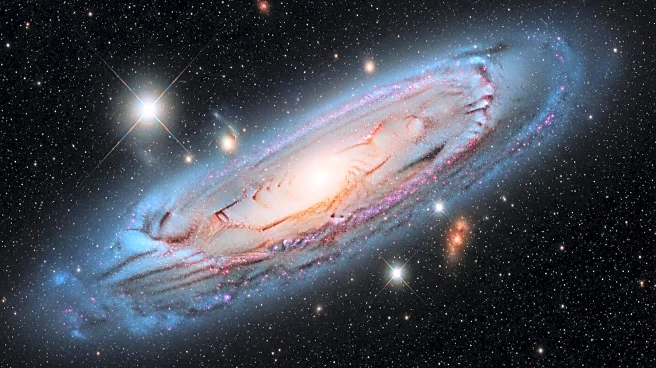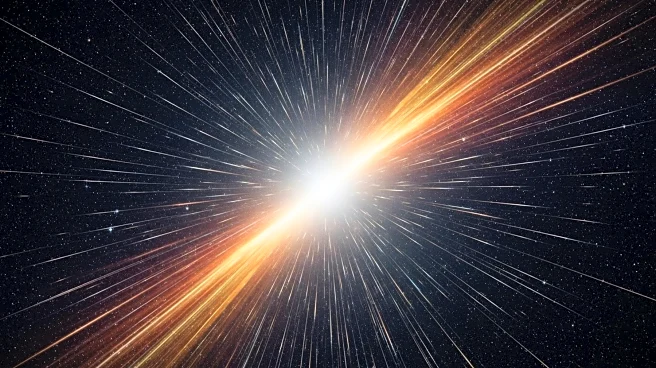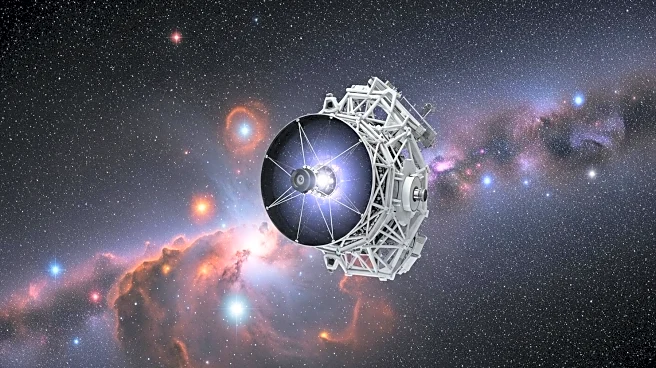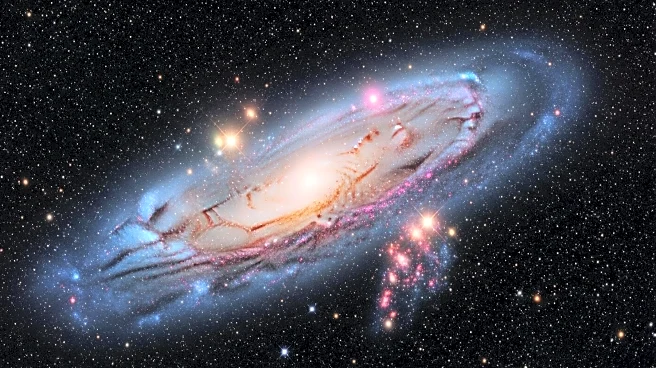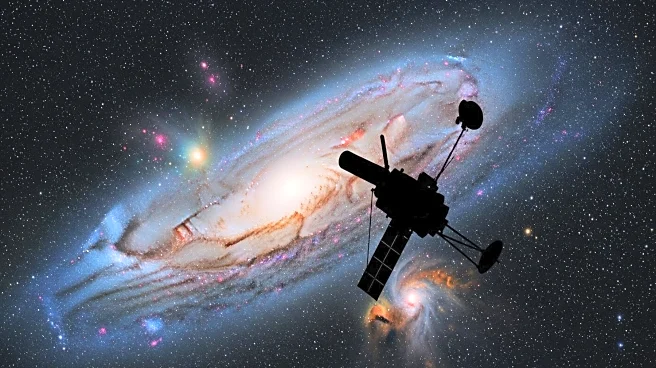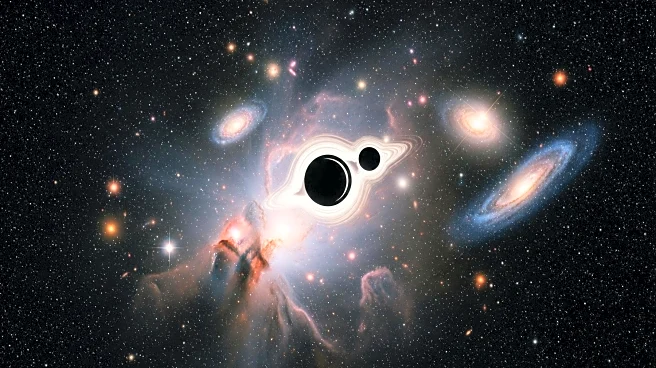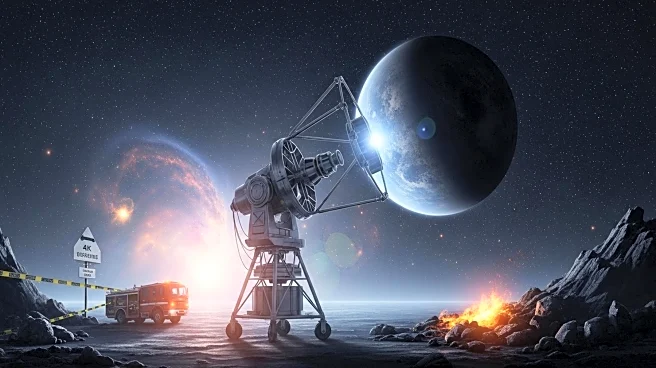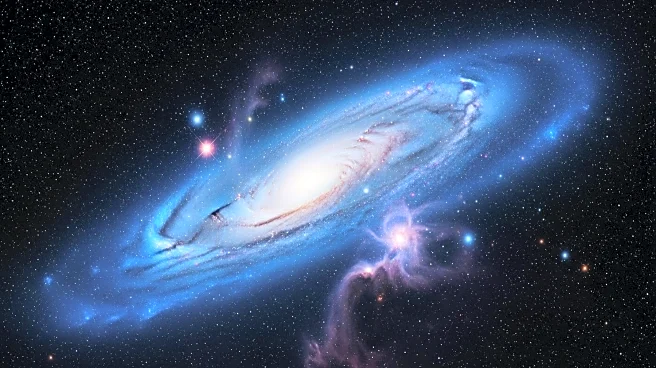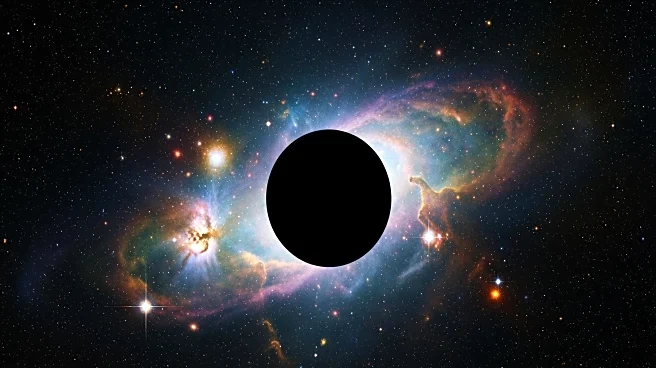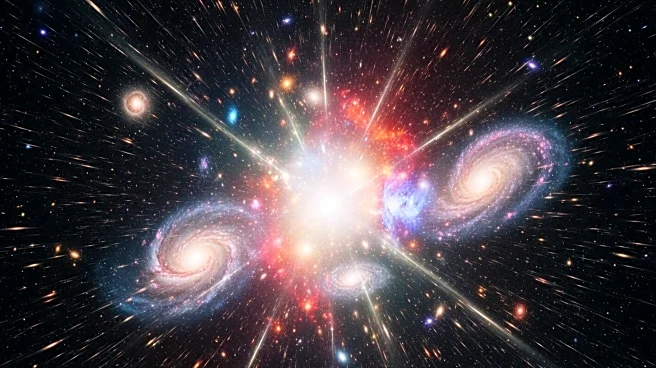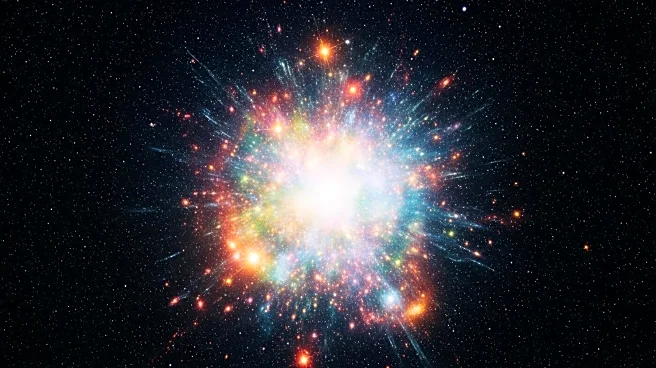What is the story about?
What's Happening?
The Hubble Space Telescope has captured a new image of the galaxy NGC 2775, located 67 million light-years away in the constellation Cancer. This galaxy presents a unique challenge for astronomers due to its hybrid characteristics, displaying features of both spiral and elliptical galaxies. NGC 2775 has a smooth, gas-free center typical of elliptical galaxies, while also possessing a dusty ring with star clusters akin to spiral galaxies. The classification of NGC 2775 remains uncertain, with some researchers suggesting it could be a lenticular galaxy, which shares traits with both spiral and elliptical galaxies. The galaxy's unusual appearance may be the result of past mergers with other galaxies, as indicated by a tail of hydrogen gas extending nearly 100,000 light-years around it.
Why It's Important?
The study of NGC 2775 provides valuable insights into the formation and evolution of galaxies. Understanding hybrid galaxies like NGC 2775 can help astronomers learn more about the processes that lead to the development of different galaxy types. This knowledge is crucial for constructing models of galaxy formation and evolution, which are fundamental to our understanding of the universe. The potential past mergers of NGC 2775 with other galaxies could offer clues about the dynamics and interactions that shape galaxies over time. Such research can also inform our understanding of the Milky Way's history and future interactions with neighboring galaxies.
What's Next?
Further observations and studies of NGC 2775 and similar galaxies are likely to continue, as astronomers seek to unravel the mysteries of galaxy formation. Future research may involve more detailed imaging and analysis of the galaxy's structure and composition, potentially using other telescopes and instruments. These efforts could lead to a clearer classification of NGC 2775 and enhance our understanding of lenticular galaxies. Additionally, the study of hydrogen gas tails and other remnants of galactic mergers may provide further evidence of past interactions, contributing to a more comprehensive picture of galactic evolution.
Beyond the Headlines
The discovery of hybrid galaxies like NGC 2775 challenges traditional classifications and highlights the complexity of the universe. It underscores the need for flexible models that can accommodate the diverse range of galactic forms and behaviors. This research also raises questions about the role of dark matter in galaxy formation and the potential influence of unseen forces in shaping the cosmos. As astronomers continue to explore these phenomena, they may uncover new principles governing the universe, leading to paradigm shifts in our understanding of cosmic history.
AI Generated Content
Do you find this article useful?
